HIPAA Compliance Checklist for 2025

In a SaaS-driven business environment, contracts are being signed faster than ever, but not always smarter. According to World Commerce & Contracting, poor contract management costs companies up to 9% of their annual revenue, largely due to inefficiencies, risks, and missed obligations.
That’s where a Master Service Agreement (MSA) comes into play.
This guide will break down everything you need to know about Master Service Agreement agreements, including benefits, key components, common challenges, and how platforms like CloudEagle.ai can simplify Master Service Agreement management with automation and AI.
What is a Master Service Agreement (MSA)?
A Master Service Agreement (MSA) is a foundational contract between two parties that outlines the standard terms and conditions for future transactions or services. In procurement, an MSA simplifies and accelerates business engagements by eliminating the need to negotiate terms every time a new service or project is initiated.
The main purpose of an MSA is to simplify and standardize recurring business relationships, reduce negotiation time, and protect both parties with clear legal terms.
Instead of drafting a fresh contract for each transaction, the Master Service Agreement establishes a baseline. Specific projects or purchases are executed via Statements of Work (SOWs) under the broader Master Service Agreement framework. This setup is especially valuable in msa procurement, IT services, consulting, and SaaS vendor relationships where repeat transactions are common.
MSA standards refer to best practices or templates used by companies to ensure consistency, legal protection, and operational efficiency across all vendor contracts.
MSA vs SLA: What’s the Difference?
Master Service Agreement is the overarching legal agreement. Service Level Agreement is a subset within the MSA that defines specific performance metrics and service expectations. While both MSAs and SLAs (Service Level Agreements) are critical in business contracts, they serve distinct roles:
- MSA (Master Service Agreement): A high-level agreement covering general terms such as payment conditions, liabilities, IP rights, and dispute resolution. It's more legal in nature.
- SLA (Service Level Agreement): A performance-focused document defining measurable service expectations like uptime, response times, and quality benchmarks. SLAs can exist as part of or separate from MSAs.
Think of the Master Service Agreement as the legal backbone and the Service Level Agreement as the service promise within it.
What Are the Benefits of a Master Service Agreement?
1. Clarity in Roles and Deliverables
A Master Service Agreement clearly outlines the responsibilities, scope, and expectations for both parties. This eliminates ambiguity and reduces miscommunication during project execution. It creates a shared understanding of ownership, timelines, and deliverables, reducing the chances of scope creep. With better alignment, teams can work efficiently without revisiting terms for every engagement.
2. Faster Deal Closures and Cost Savings
Instead of renegotiating terms for every project, companies can use the pre-agreed framework in the Master Service Agreement, saving time and legal costs. This speeds up procurement cycles significantly.
Legal reviews become more efficient, procurement approvals are faster, and internal stakeholders can act confidently knowing key terms are already covered. This agility is especially valuable in competitive or fast-moving markets.
3. Legal Protection and Risk Reduction
With predefined liability clauses, dispute resolution processes, and jurisdiction details, Master Service Agreements reduce legal exposure and streamline the resolution of conflicts. They also establish a baseline for handling service failures, indemnification, and termination scenarios, protecting both sides from costly misunderstandings or lawsuits.
4. Better Collaboration and Communication
By standardizing engagement terms, Master Service Agreements help vendors and clients collaborate smoothly, ensuring long-term strategic alignment and partnership. When expectations are clearly defined from the start, both parties can focus more on value delivery rather than navigating contractual grey areas. It also builds trust over time, improving vendor performance.
5. Easier Renewals and Favorable Terms
Master Service Agreements can contain renewal clauses or negotiation triggers, ensuring contracts remain fair and relevant over time. This reduces churn and boosts vendor-client loyalty. Procurement teams can negotiate from a position of strength using historical performance data, while vendors are incentivized to maintain high standards for continued business.
When Should Businesses Use a Master Service Agreement?
Master Service Agreements are particularly valuable in the following scenarios:
Handling Recurring Transactions
- Saves time by avoiding repetitive negotiations with the same vendor.
- Speeds up procurement approvals and project initiation.
- Ideal for SaaS renewals, IT services, and ongoing vendor relationships.
Meeting Regulatory Requirements
- Ensures compliance in regulated industries like healthcare, finance, and defense.
- Documents data handling, audit processes, and legal obligations clearly.
- Helps avoid regulatory fines and operational delays.
Protecting Intellectual Property
- Clearly defines IP ownership, licensing, and confidentiality clauses.
- Safeguards trade secrets, proprietary software, and creative assets.
- Prevents disputes over deliverables or usage rights.
Managing Large-Scale or Long-Term Contracts
- Provides consistency across multiple phases or long-term engagements.
- Reduces administrative burden by eliminating the need for repeated contracts.
- Offers flexibility to add SOWs as the project evolves.
Maintaining Confidentiality
- Embeds NDAs to protect sensitive business, pricing, or operational data.
- Promotes trust between parties and minimizes data exposure risks.
- Critical for vendor negotiations and joint ventures.
Establishing Long-Term Partnerships
- Lays a strong legal foundation for ongoing strategic collaborations.
- Encourages transparency, mutual accountability, and value-driven growth.
- Helps both sides focus on long-term performance, not paperwork.
What Does a Typical Master Service Agreement Include?
A well-drafted Master Service Agreement (MSA) includes Key clauses: payment terms, delivery standards, IP ownership, confidentiality, dispute resolution, jurisdiction, liability, and renewal/termination terms. These key elements to ensure clarity, legal protection, and smooth operations throughout the business relationship:
1. Delivery Timelines and Work Standards
Defines expected timelines for services or deliverables, and quality standards for outputs.This helps set realistic expectations, track performance, and hold vendors accountable for delays or subpar work. It also enables smoother project planning and resource allocation.
2. Payment Terms and Warranties
Outlines billing cycles, payment milestones, refund policies, and any guarantees or service warranties.This clarity avoids disputes over payments and ensures both parties are aligned on cost structures, invoicing schedules, and service quality assurances. It also protects against hidden fees or billing surprises.
3. Intellectual Property and Dispute Resolution
Specifies ownership of intellectual property created, and outlines procedures for conflict resolution (e.g., arbitration, litigation). Clearly defined IP rights protect businesses from unauthorized use of proprietary materials. Dispute resolution terms reduce legal friction by setting a fair and efficient process to settle disagreements.
4. Confidentiality Clauses and Liability
Includes non-disclosure agreements, indemnification clauses, and limitations on liability to protect both parties.This protects sensitive information from leaks or misuse while limiting exposure in case of contract breaches or third-party claims. It ensures legal safeguards are in place to mitigate damages.
5. Jurisdiction and Governing Law
Clarifies which state or country’s laws will govern the agreement and where disputes will be resolved.This is essential for cross-border or interstate deals, helping avoid legal confusion and ensuring that both parties understand their legal rights and obligations under a specific legal framework.
Challenges in Managing Master Service Agreement Agreements
Despite their benefits, Master Service Agreements come with their own set of challenges:
1. Lack of Clarity in Expectations
If the Master Service Agreements is vague or inconsistent, it can lead to disputes, especially when dealing with multiple projects or teams.
2. Poor Visibility and Tracking of Contracts
Manually managing multiple Master Service Agreements across departments can lead to expired agreements, compliance risks, and missed opportunities.
3. Limited Knowledge of MSA Processes
Procurement and legal teams may not always be fully trained to draft or manage Master Service Agreements effectively, leading to gaps in protection.
4. Cybersecurity and Data Privacy Risks
With increasing digital engagement, Master Service Agreements that don’t address data privacy, breach responsibilities, or cloud security can pose threats.
How to Overcome Master Service Agreement Challenges
To mitigate the risks and inefficiencies of managing Master Service Agreements, organizations should adopt the following best practices:
- Enhance Communication and Standardization - Create internal workflows and use standardized templates to ensure consistency and reduce legal ambiguity across all MSAs.
- Boost Contract Visibility with Technology - Use contract lifecycle management (CLM) or procurement platforms to centralize contracts, track renewals, and improve governance.
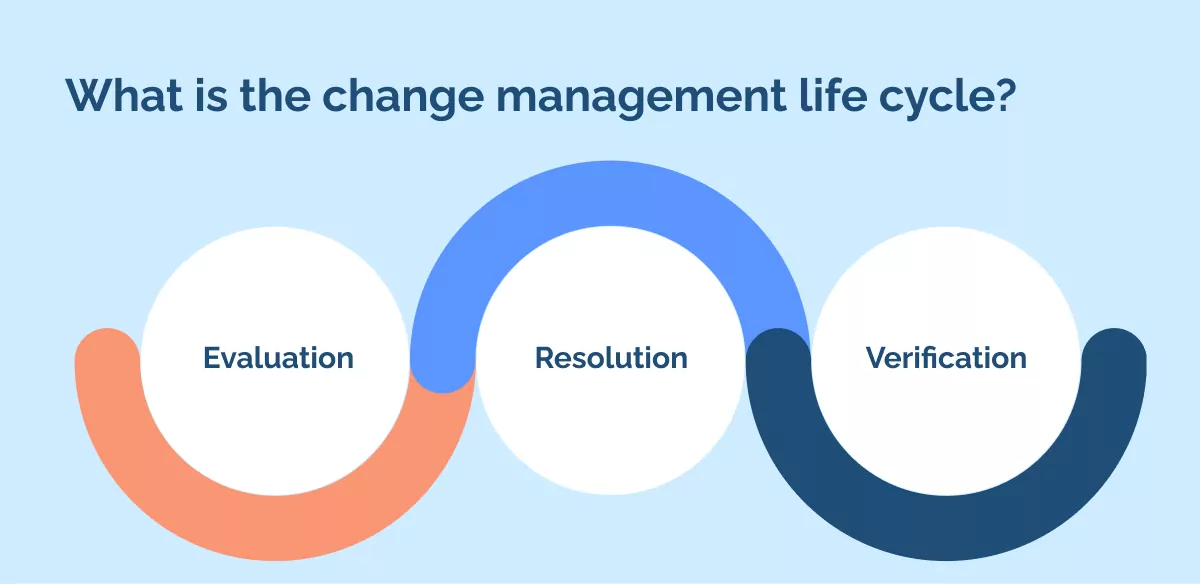
- Educate Teams on Contract Management - Provide ongoing training to procurement, legal, and IT teams to strengthen MSA understanding and execution.
- Strengthen Data Security Practices - Update MSAs with robust cybersecurity, data handling, and breach protocols to align with privacy regulations like GDPR compliance and CCPA.
How CloudEagle.ai Simplifies Master Service Agreement Management
CloudEagle.ai is not just another procurement or contract tool, it's a modern SaaS and cloud governance platform purpose-built to help procurement, IT, and finance teams gain complete visibility and control over their software contracts, vendor relationships, and Master Service Agreements (MSAs).
With growing SaaS portfolios and increasingly complex vendor engagements, traditional CLM solutions often fall short in connecting contract terms to actual software usage, compliance, and spend. CloudEagle closes this critical gap with AI-driven automation, deep integrations, and real-time insights.
Key Features That Make CloudEagle.ai Ideal for MSA Management
Centralized Master Service Agreement Repository
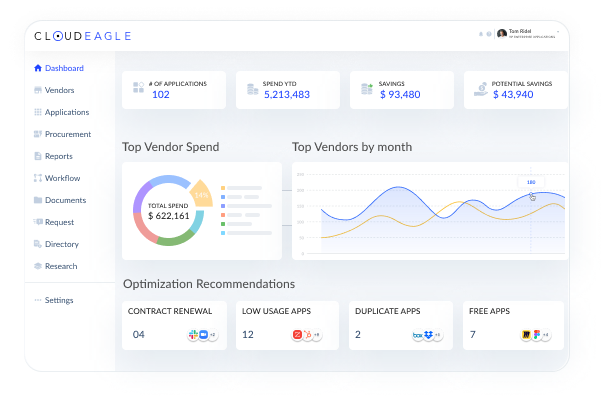
- Store, track, and manage all your MSAs, SOWs, SLAs, and contract amendments in one secure, unified platform.
- CloudEagle supports role-based access control, advanced search, and document versioning, making it easy for legal, procurement, and finance teams to collaborate efficiently and stay audit-ready.
Renewal and Expiry Alerts
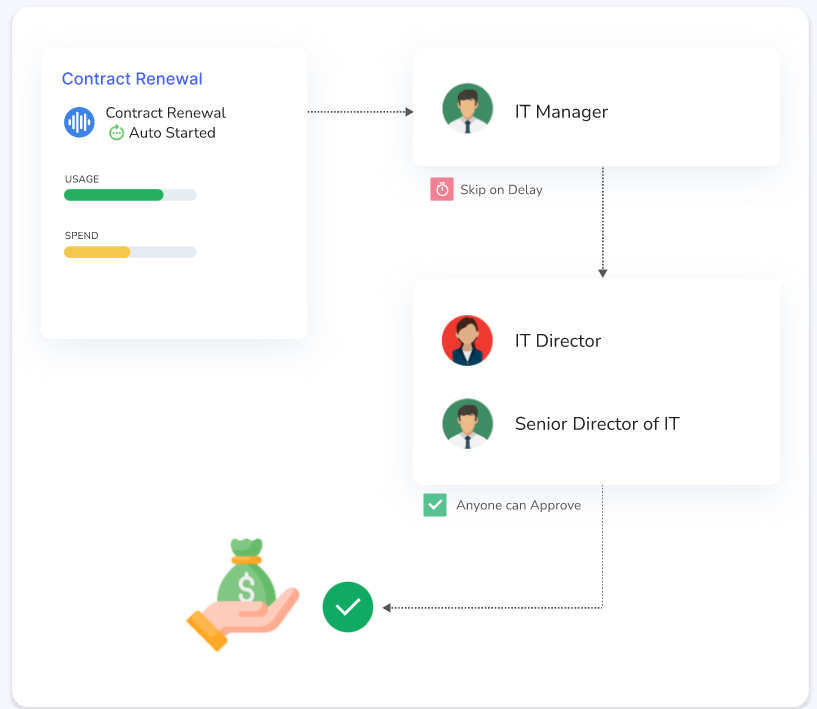
- Never miss a critical deadline. CloudEagle automatically flags upcoming MSA expirations, auto-renewal clauses, and renegotiation windows.
- You’ll get timely alerts and custom reminders, helping you negotiate better terms or terminate unused agreements proactively, saving significant costs and avoiding lock-ins.
AI-Powered Contract Intelligence
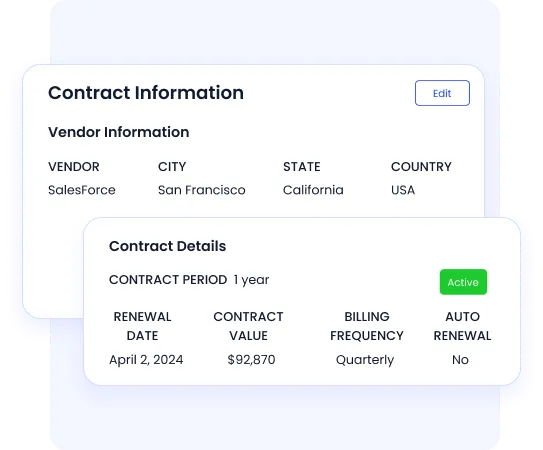
- Leverage CloudEagle’s AI to scan, analyze, and extract key MSA clauses like liability limits, renewal terms, or IP ownership without digging through legal documents manually.
- The tool highlights risks, suggests redlines, and even compares new contracts against your organization’s preferred legal standards to speed up negotiation and ensure compliance.
Automated Approval Workflows

- Whether it’s a new MSA, renewal, or vendor onboarding, CloudEagle.ai offers automated routing for internal approvals, signature collection, and document filing.
- This eliminates manual handoffs, reduces errors, and ensures all agreements go through the correct procurement, legal, and security reviews before execution.
Spend Visibility and License Utilization Tracking
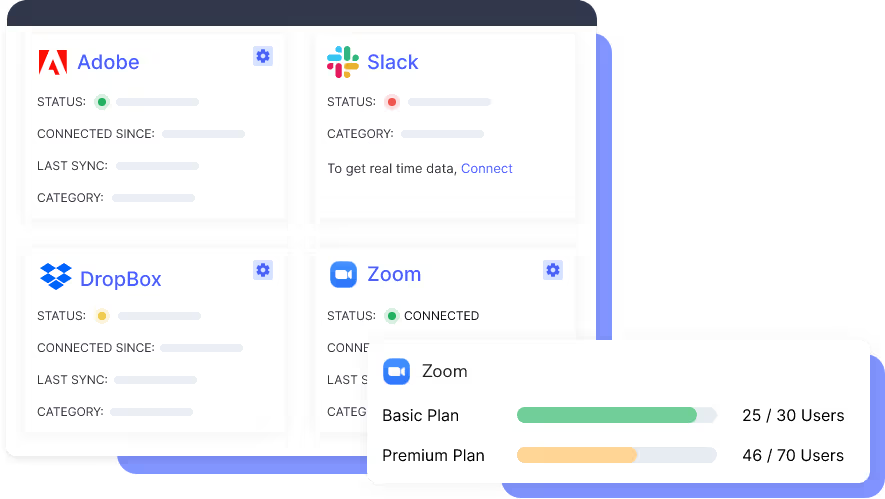
- CloudEagle ties your MSA agreements directly to software spend and usage data, so you can monitor if vendors are delivering value.
- Track license consumption, user activity, contract cost trends, and renewal cycles, all in one place, to optimize ROI and vendor performance under every MSA.
Why Choose CloudEagle Over Traditional CLM Tools?
Most legacy CLM tools focus purely on storing contracts, but they don’t connect those contracts to real-time software operations. That’s where CloudEagle stands apart.
- It integrates with your entire SaaS stack, pulling in usage, user, and spend data.
- It links that data back to the contractual terms in your MSA.
- It gives procurement, finance, and IT teams a single source of truth, from software negotiation to post-purchase governance and renewal optimization.
If you're tired of managing fragmented MSAs across email chains, spreadsheets, and siloed tools, CloudEagle gives your organization an intelligent, centralized platform to take back control of contract management, reduce risk, and drive smarter vendor decisions.
👉 Explore how CloudEagle can streamline your MSA and procurement strategy
Conclusion
A Master Service Agreement (MSA) is a cornerstone document that streamlines business operations, especially in fast-paced procurement environments. It brings clarity, speeds up engagements, and protects both parties legally and financially.
Yet, as MSAs increase in complexity especially with the rise of SaaS, cloud services, and global vendors, traditional methods of managing them fall short.
By adopting intelligent platforms like CloudEagle, businesses can simplify MSA workflows, reduce legal and compliance risks, and gain full visibility into contract performance and spend.
FAQs
What is an MSA in purchasing?
An MSA in purchasing is used to set predefined legal and commercial terms for future buying engagements with a vendor or service provider.
What is the difference between an MSA and a SOW contract?
An MSA outlines the general framework. A SOW (Statement of Work) is a specific agreement under the MSA for a particular service or project with detailed deliverables and timelines.
What is a subscription agreement?
A subscription agreement defines the terms under which a customer subscribes to a service, commonly used in SaaS. A Master Subscription Agreement (a variant of MSA) governs these terms for recurring services.
What is the purpose of a MSA?
A master service agreement (MSA) is a legal contract that establishes fundamental agreements between two parties. MSAs allow vendors and clients to agree on basic terms at the outset of a business relationship before any business commences.
Who needs an MSA?
Master Service Agreements work best in specific business scenarios where you expect ongoing work with the same partner. You should consider implementing an MSA when: You anticipate multiple projects with the same vendor over an extended period. Your business needs recurring services from the same providers

%201.svg)








.avif)




.avif)
.avif)




.png)









